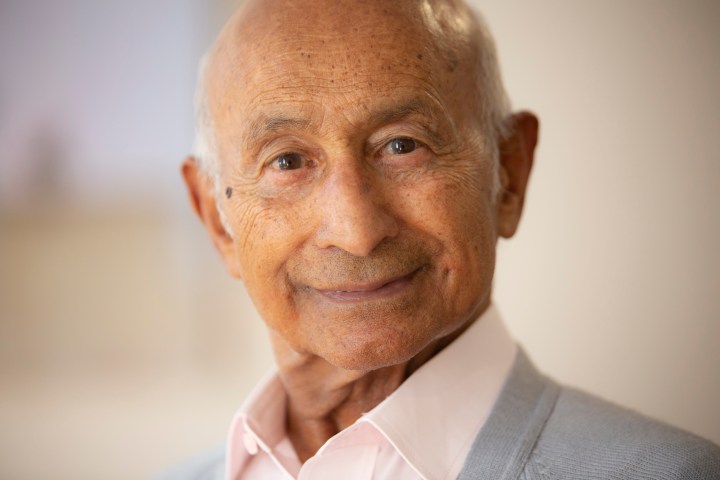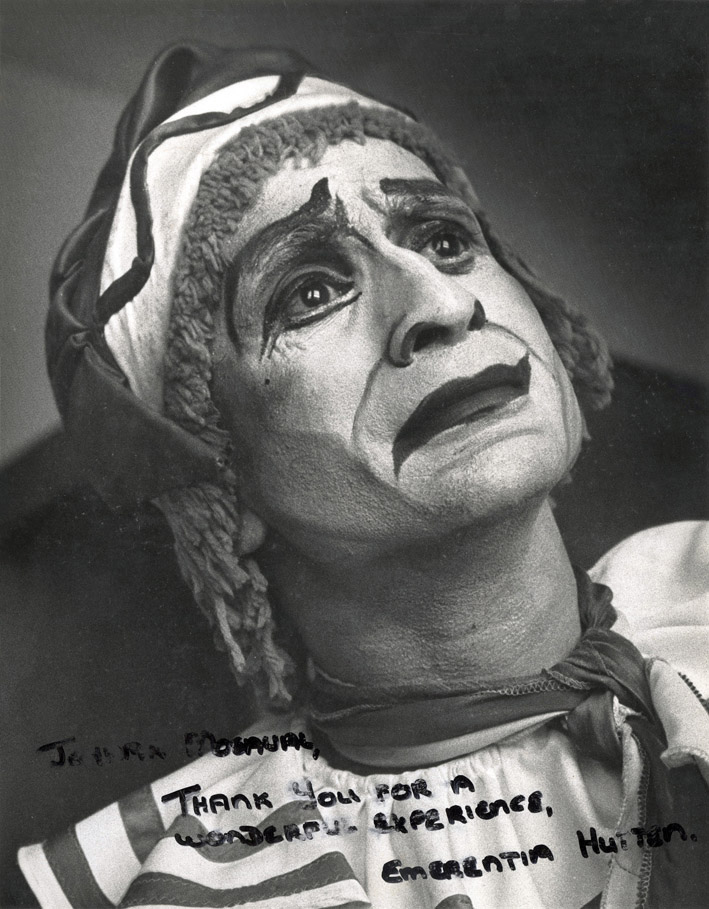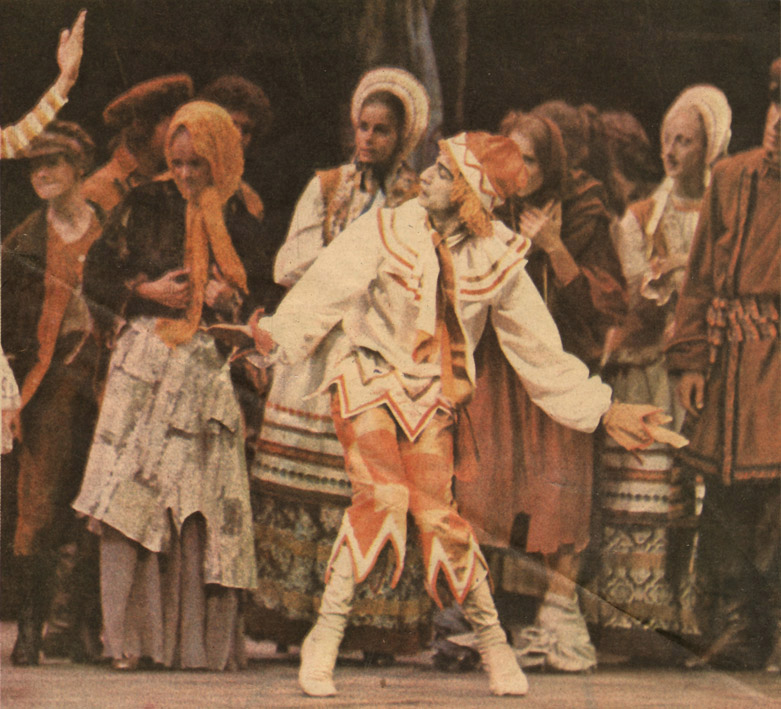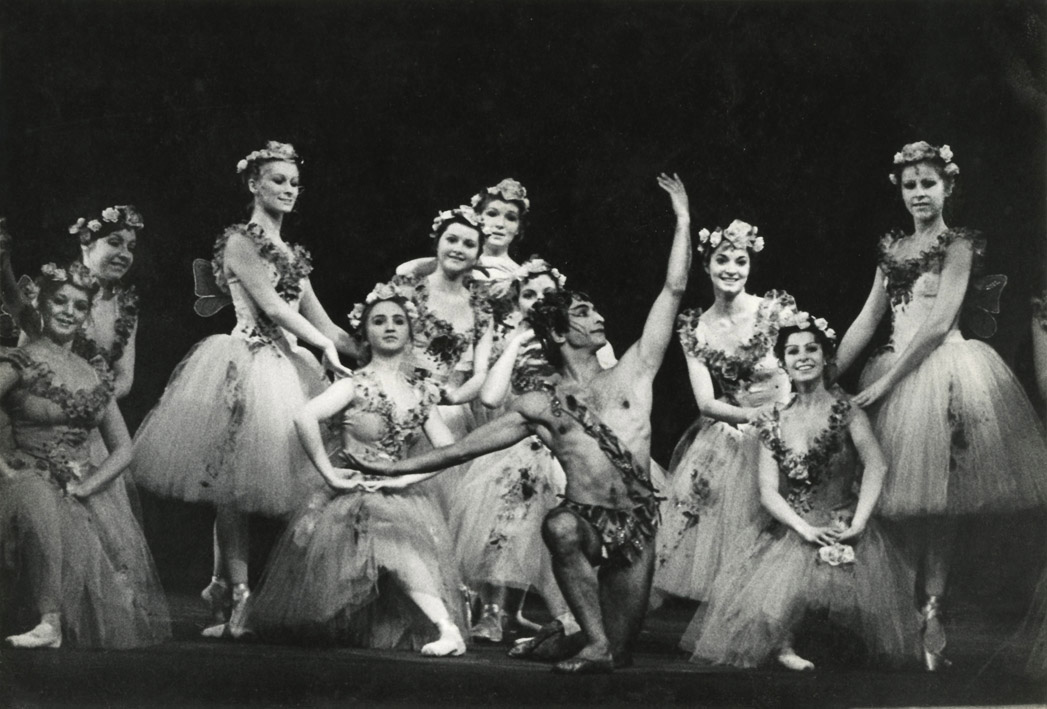BALLETIC TRIBUTE
FROM OUR ARCHIVES – Celebrating the life of ballet star Johaar Mosaval at 90

Johaar Mosaval was the first black South African to become a senior principal dancer at the Royal Ballet, the highest rank in the profession at one of the world’s most prestigious classical ballet centres. This weekend at Artscape, a ballet performance by the Cape Town City Ballet, The Johaar Mosaval Journey: District Six to The Royal Ballet, celebrated the life of a living legend. He turned 90 in January.
In a pink shirt and a light grey cardigan, he stands straight-backed, his neck long, shoulders relaxed, chin lifted. His arms float gracefully as he gestures, and his eyes have not lost their sparkle.
Speaking to his old friends and family members at the District Six Homecoming Centre last Tuesday, Johaar Mosaval described his journey to the Royal Ballet during the height of Apartheid, dancing for Queen Elizabeth II and being the first black performer on the “whites-only” Nico Malan stage in the 1970s.
His memory is meticulous. He clearly recalls being forced as a young dancer to dance behind a line at the back of the class because he was black. “It was very difficult… I had to stand at the back. There was a line at the back and I dare[d] not pass that line. And when I did pass that line I would be looked at… That made me feel very bitter and I would ask himself whether to continue with ballet,” he said.
But his ambition won. “I told myself I’ll stick it out because one day I’ll show every one of them that I’ll become one of the top dancers in the world,” he said.

Petrouchka 02: Johaar Mosaval plays Petrouchka. Archive image courtesy of Johaar Mosaval
Born to Cassiem and Galila Mosaval on 8 January 1928, the famous dancer comes from humble beginnings. “Money was very hard up,” he said. “My mother and father never paid a cent for me to become a dancer, because there was no money available.”
The eldest of ten children, his mother was a seamstress and his father came from a family of builders and ballroom dancers. The Mosaval family lived in District Six straight opposite the Seven Steps, a site that was immortalised in Taliep Petersen’s musical District Six and became a strong historical symbol of a community that was forcibly removed and razed down by the Apartheid state following the passing of the 1950 Group Areas Act.
“Whenever [my mother] wanted to get rid of me, she would send me up to the seven steps to go and play up there,” he said with a smile. Having his mind set on being a male ballet dancer in a fervently racist and patriarchal society would not be an easy path. The men in his family did not approve of him pursuing a career in dance, and on one occasion he was made fun of by a male teacher, a memory he cannot seem to shake.

The Blue Bird: Johaar Mosaval plays The Blue Bird in ‘Sleeping Beauty’. Archive image courtesy of Johaar Mosaval
“My teacher asked every student in the class, ‘What do you hope to be when you grow up?’ And when it came to me I said, “One day I would like to be a famous ballet dancer,” and he laughed at me,” said Mosaval. The painful memory still visibly affects him. “The class also laughed because the teacher was laughing, I felt the ground open, I felt totally embarrassed and hurt that he should laugh at me.”
But his talent was unmistakable. He excelled as an athlete, swimmer and gymnast. He also often appeared in popular pantomimes at the Cape Town City Hall. He started ballet classes and was soon introduced to Dulcie Howes, one of the pioneers and doyennes of ballet in South Africa. She offered him the opportunity to train at the University of Cape Town Ballet School, which he began at the age of 19.
At this stage, the late 1940s, the future for people of colour in Apartheid South Africa was already beginning to look bleak as strict laws of racial segregation were being passed. But these policies did not stop the dancer. When internationally acclaimed British male ballet star Anton Dolin and one of the world’s greatest classical ballerinas, Alicia Markova, came to South Africa searching for new talent, Mosaval was snuck into the old Alhambra Theatre on Riebeeck Street to audition for the visiting artists.
They were so impressed that they recommended he study at the Sadler’s Wells Theatre Ballet School (later to become the Royal Ballet School). With the financial assistance of friends and fundraising by the Muslim Progressive Society, he managed to scrape enough money together to travel to London.
After two years in London, he excelled at his studies and was preparing to return to South Africa, despite being told that he would never ‘make it’ as a professional dancer. “My teacher said to me that I would not be able to get a job as a dancer in because of my height. I’m very small and she said I would not be accepted at a ballet company,” he said, placing his hand gently on his head for emphasis.
“How wrong she was.”

Johaar Mosaval plays Petrouchka. Archive image courtesy of Johaar Mosaval
He recalls the cold winter day he was summoned to the office of the Sadler Wells Theatre and asked to sign a document which would make him an official dancer of one of the most prestigious ballet schools in the world, a position he would keep for more than two decades. “I’ll never forget that day; it was dark and snowing outside. They were very pleased with what I [had] achieved. Three years’ work I achieved in 18 months,” he said.
Mosaval is a giant in the world of ballet. He has performed, mostly as a soloist, all over the globe, and shared a stage with the likes of prima ballerina’s Margot Fonteyn, Elaine Fifield and Doreen Wells. He danced Jasper Sir Arthur Sullivan’s Pineapple Poll ballet, which premiered in 1951 at Sadler’s Wells Theatre. He also played Bootface in The Lady and the Fool and Puck in The Dream.
He became revered for his wide range of style and flawless technique and was chosen to dance in Benjamin Britten’s Opera Gloriana, the first performance presented at the Royal Opera House, London, in 1953, during the celebrations of the coronation of Queen Elizabeth II. He describes the experience as the highlight of his life.
“For me to be chosen to dance for the Queen at her coronation was just one of the most exciting moments of my life. That night the whole opera house consisted of every king and queen and every president including the British Prime Minister, Winston Churchill. During the interval I was taken to be presented to Her Majesty Queen Elizabeth, Princess Margaret and Prince Philip, Duke of Edinburgh. That night I was floating on cloud nine,” he said with a wide grin.
His last performance with the Royal Ballet, after 25 years as a Senior Principal Dancer, was as the Blue Bird in The Sleeping Beauty at the ripe age of 48.

Puk: Johaar Mosaval plays Puck in ‘The Dream’. Archive image courtesy of Johaar Mosaval
Mosaval returned home in 1976. He started teaching in Mitchells Plain and Paarl. During the same year, he was invited to dance at what was then the Nico Malan Opera House. “I was the first black [person] ever to set foot on that stage,” he said. At the time the venue was highly controversial. Having opened its doors in 1971, the theatre originally had a ‘whites-only’ policy, which extended to performers. While dancing in Michel Fokine’s Petruskha, Mosaval’s contract stated that he was not allowed to touch a white ballet dancer with his bare hands.
By 1975, the theatre allowed all races onto its premises, but people of colour required a permit to enter. As a result, the boycott of the theatre lasted until the end of Apartheid.
“It is so sad that South Africans could not see me when I was at the height of my career. As a dancer, I was quite outstanding, and South Africans only saw me very late as a dancer, but I was still able to show my ability,” he said with a definitive nod.
Mosaval now lives in Lansdowne. He eats a healthy diet and still stretches a few times a week, mostly simple leg and arm exercises, “Not the splits anymore,” he said with a chuckle. He no longer gives classes, but provides coaching and advice to younger dancers. He is also putting together an archive of his life and writing a book. He maintains that he has “beautiful memories” of his dancing career, and would do it all over again in a heartbeat. DM
This article was republished from our archives. Mosaval passed away on Wednesday, 16 August, 2023. See article here.

















 Become an Insider
Become an Insider